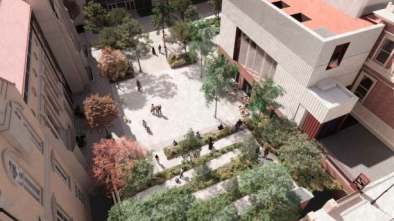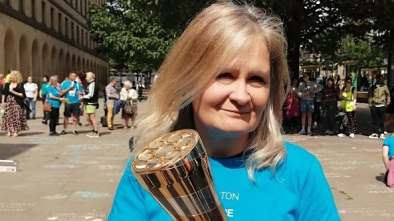Ardea Cinerea – Our Local Egyptian God
I am nothing/ But a prayer/ To catch a fish/ A hush of air…
The Grey Heron (Ardea Cinerea) – a familiar figure in our local rivers and ponds. Whether swooping overhead, vast wings outstretched, or stalking through reed beds, javelin-beak poised, these birds seem to be everywhere in Saddleworth, enchanting us with their grace, nobility and poise – truly a sight to behold. It’s easy to see why many of us value their place as an icon of our beautiful landscape. But what else is there to know about these wise old fishermen? And where, if you haven’t already, might you be able to glimpse one yourself? Read on to find out more.
Long before they were the subjects of our reverence, herons were worshipped by the ancient Egyptians: Their sacred Bennu Phoenix – depicted below – symbolised rebirth and creation and was thought to be the ‘Ba’ (manifest personality) of the most important Egyptiangod, Ra, the god of the sun. It was believed the phoenix existed before all and was responsible for, amongst many things, the inundation of the Nile River and the creation of time, its cry marking the beginning of hours, days, weeks, months, and years.

It was long thought that the Egyptians exaggerated the size of the heron in their depictions to reflect the phoenix’s significance. However, during the 1970s, archaeologist Ella Hoch discovered the remains of an enormous specimen on an island in the United Arab Emirates. Based on a lower leg bone, it was estimated the heron may have stood up to seven feet tall, with a wingspan of nearly nine feet! What’s more, the bones were dated around 2600 to 1800 BC, which is the period in which the birds were being illustrated.

With their long capes of grey lanceolate plumes and wings tinted blue, something of the divine certainly still shrouds these creatures. Like shamans or spirits, they haunt the shallows of Saddleworth, the scourge of frogs, ducklings and fish. Their numbers have risen dramatically over recent years owing to both less polluted local waterways and status as a protected species. British herons are also non-migratory, roosting in treetop colonies called heronries; the collective noun for the birds being a ‘siege’.
If you’re looking for one yourself, you’re best-off searching at dawn or dusk, which is when they’re most active, although, you’ve a good chance at any time of day. Likewise, there’s always a chance of seeing one anywhere in Saddleworth, but below is a list of waterways where I’ve personally seen them regularly:

– The River Tame running from the Castleshaw & Pingle valleys through Delph towards Dobcross.
– The Huddersfield narrow canal between Uppermill and Diggle.
– The Chew Brook running from Dovestones to Greenfield, especially at the bend by Greenbridge Lane.
These are testing times for our local community, and we’re extremely fortunate that we can find such easy solace in our local wildlife. Heron’s are amazing creatures with an epic past entwined with a message of creation, renewal, and hope, so the next time you witness one, remember, they once inspired the worship of millions, emerging from the ashes to herald the first sun rising over a world that knew no virus.
A bloom of cloud/ On tilting stalk/ Over the water’s face I walk…
Quoted from The Heron by Ted Hughes




